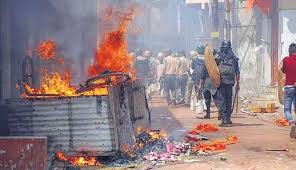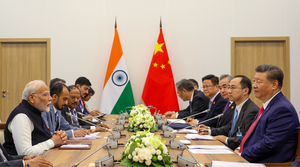- Dr. Pranab Sengupta , Advocate
Communal riots and tensions have been a recurring and troubling aspect of societal life
in various regions of the world, including India. These conflicts typically involve clashes
between different religious, ethnic, or communal groups and can result in violence,
destruction, loss of life, and deep-seated social divisions. In this 500-words exploration,
we will delve into the causes, consequences, and potential solutions to communal riots
and tensions, with a particular focus on the context of India.
Causes of Communal Riots and Tensions:
Communal riots and tensions often arise from a complex interplay of factors. One of
the primary drivers is the manipulation of religious or communal identities for political gain.
Opportunistic politicians may exploit existing religious divides to consolidate their power
or divert attention from other pressing issues. This manipulation can lead to the polarization
of communities and the stoking of animosities.
Economic disparities and competition for resources can also fuel communal tensions.
When communities perceive that their livelihoods or access to resources are under threat
from another group, it can create a fertile ground for conflict. Additionally, historical
grievances, often stemming from events like partition, can linger and periodically resurface,
reigniting tensions.
Consequences of Communal Riots and Tensions:
Communal riots and tensions have far-reaching and devastating consequences. First
and foremost, they lead to loss of life, injuries, and property damage. Innocent civilians,
including women and children, often suffer the most. Moreover, these conflicts deepen
the rifts between communities, eroding trust and social cohesion. Communities become
polarized, and prejudices and stereotypes are reinforced, making it difficult for people to
coexist peacefully.
Economically, communal tensions can disrupt trade, investment, and economic
development in affected regions. Businesses may suffer losses, and investors may be
wary of putting their money into areas with a history of communal violence. The social
fabric of a society is torn, hindering progress and development.
Efforts to Address Communal Riots and Tensions:
Addressing communal tensions is a complex and ongoing process that requires the
involvement of multiple stakeholders. One crucial step is ensuring that the rule of law
prevails. Authorities must act swiftly and impartially to bring those responsible for inciting
or participating in violence to justice. This sends a strong message that communal violence
will not be tolerated.
Promoting intercommunity dialogue and understanding is another essential strategy.
Civil society organizations, religious leaders, and community leaders can play a vital role
in facilitating discussions and fostering empathy between different groups. Education and
awareness campaigns that promote tolerance and diversity can also help combat prejudice
and stereotypes.
Moreover, economic development and poverty alleviation programs can address some
of the root causes of communal tensions. By reducing economic disparities and providing
opportunities for marginalized communities, these initiatives can mitigate the competition
CM Manik Saha inaugurates first-ever National Integration Camp in Tripura
Agartala, Sep 09: Chief Minister Prof. (Dr.) Manik Saha on Tuesday inaugurated…
- Tripur Live
- September 9, 2025
- 2 minute read
আগরতলায় জাতীয় সংহতি শিবিরের সূচনা করলেন মুখ্যমন্ত্রী
আগরতলা, ৯ সেপ্টেম্বর, ২০২৫ঃযুবকরাই দেশের ভবিষ্যৎ—এই বার্তাই উঠে এলো মঙ্গলবার আগরতলায়…
- Tripur Live
- September 9, 2025
- 1 minute read
দিল্লি-আগরতলা মিলিয়ে তিপ্রামথার আন্দোলন, পাশে বিজেপি সাংসদ
আগরতলা, ৯ সেপ্টেম্বর, ২০২৫ঃগ্রেটার তিপ্রাল্যান্ড দাবির সাংবিধানিক স্বীকৃতি এবং তিপ্রাসা…
- Tripur Live
- September 9, 2025
- 1 minute read
Radhakrishnan elected VP, clinches rare ‘South vs South’ contest
New Delhi, Sep 9: NDA nominee and Maharashtra Governor C.P. Radhakrishnan was…
- Tripur Live
- September 9, 2025
- 2 minute read









